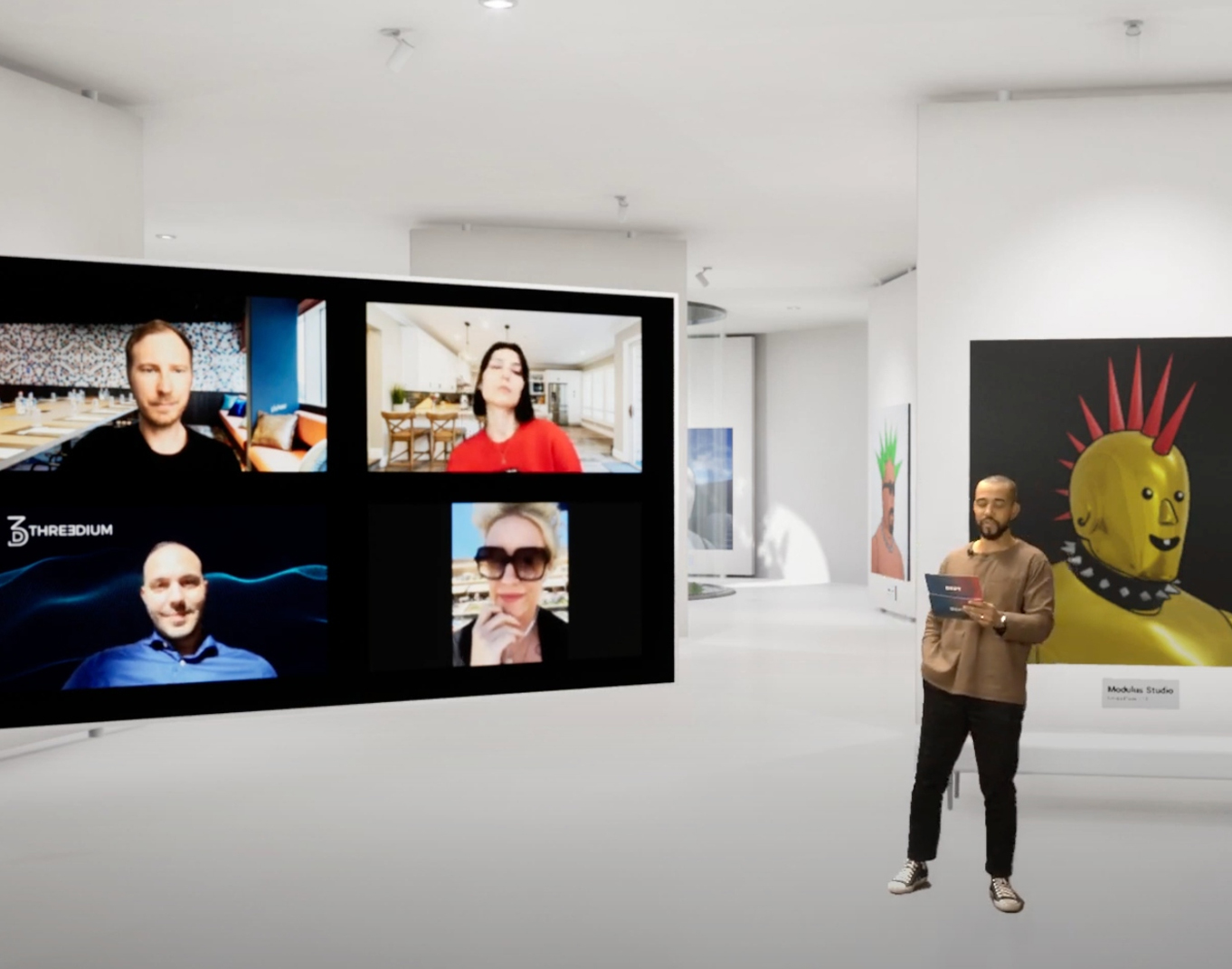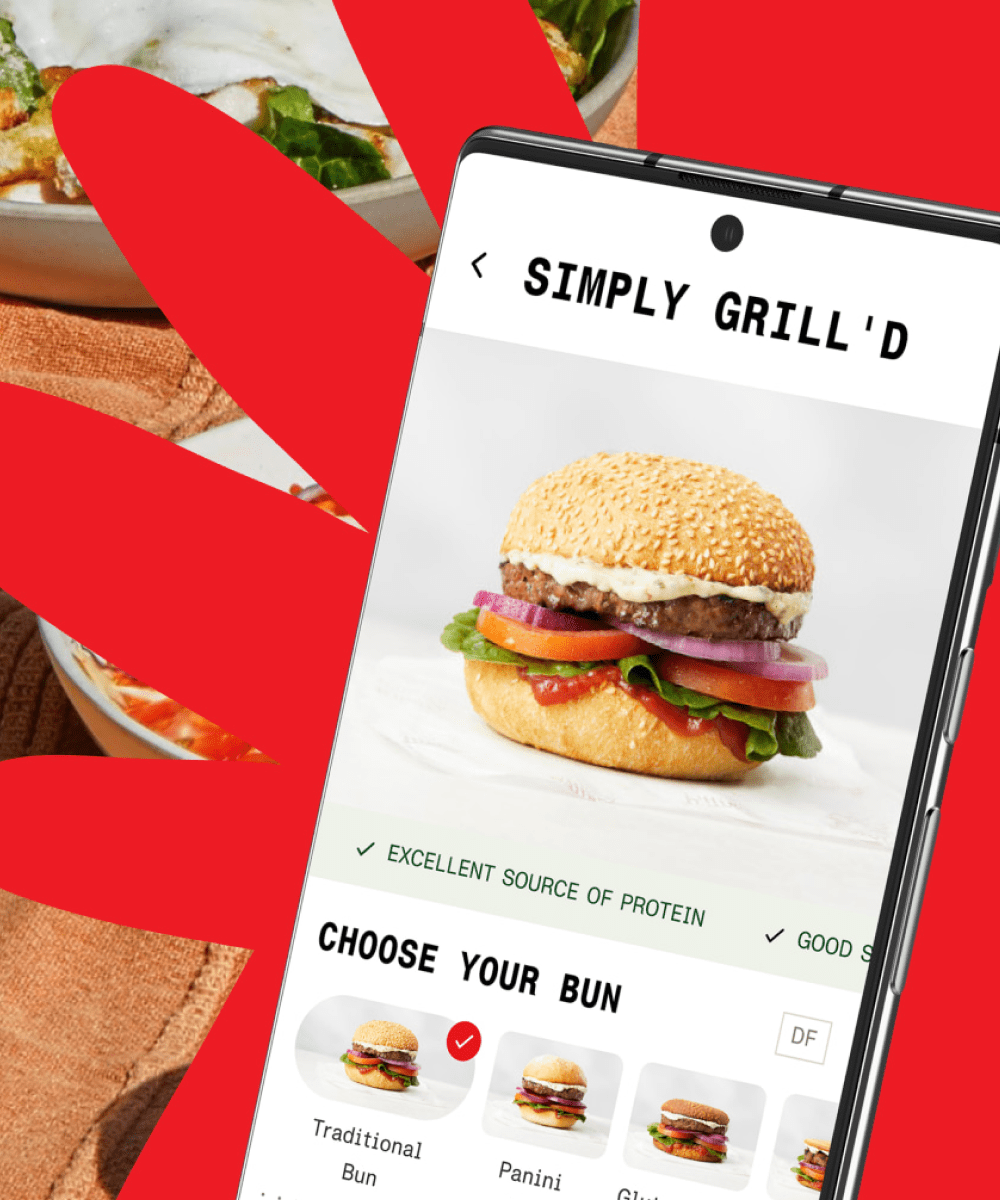Below are top takeaways from a panel conversation from the recent DEPT® event, ‘Web3: A new era for the Internet’.
To view the full discussion, scroll to the bottom of this page or watch the YouTube replay here.

Meet your panel
This panel features a discussion between Tobias Cummins, Director at DEPT® alongside four Web3 experts
- Paula Marie Kilgarriff, Web3.0 consultant
- Mike Charalambous, CEO of Threedium
- Stefania Barbaglio, founder at Cassiopeia Services
- Tim Walther, Metaverse & NFT at Volkswagen Group
Below, many Web3 topics are discussed, including how to prepare for Web3, what the metaverse will look like, and how brands can dive in.
Where should brands begin?
Paula Marie Kilgarriff: In fashion/retail, the web3 space is basically a 3D virtual shopping experience, so what I say to brands is that you need to create 3D assets and prepare your website for 3D.
When I say virtual stores, I don’t mean VR and headsets. Use your web browser to interact with a website that has 3D objects. These 3D objects give customers an opportunity to co-create certain kinds of products online.
Mike Charalambous: I couldn’t agree more. We’re actually more of a web2.5 advocate. The reason being is that most brands and agencies have revenue tied to their e-commerce shops.
A steady system needs to be shored up before your start to get your hands dirty with 3D. 3D is not your standard photography. They have their own lighting environment and their own behavior.
So once brands understand the techniques of 3D objects and how different commerce solutions use 3D, then AR product explorers can innovate and trigger specific consumer behaviors. This allows them to gather data and test them on avatars.
What are the key areas of readiness for Web3?
Tim Walther: In general, you have to dig deep into web3. You have to be aware of what is happening in this space because it is so different from web2.
Customers for your NFT/experience will be a lot different from customers of the past. In the past, you might have fans to which you’re speaking, but now (if you’re selling an NFT), you might have a small shareholder.
To do it right you must have a working roadmap, inroads in place to speak to your communities, and an understanding of how the communities interact with web3. The risk of doing something wrong is big.
To test/learn, find good partners that have a proven record. Learn from them and only then take a bigger step forward.
Is Web3 relevant for some brands more than others?
Stefania Barbaglio: Yes, I think not only fashion but the entire luxury market. Jewelry, cars, drinks, etc. Anything that needs a way to authenticate could benefit from blockchain technologies. Even the secondary market, so buyers can verify that their purchases are authentic.
Tim Walther: If you look back one year, NFTs were more or less digital images and pieces of art that are connected to the blockchain. In the past year, others have shown us what can happen with a smart contract.
If you connect this to a smart contract, then an NFT can become a community. It can become a key or a one-on-one relationship with your brand.
I’m certain that things will show up in the next month or years that we cannot even imagine at the moment.
The metaverse is the era where humans put equal ownership on digital goods as they do on physical goods.
Mike Charalambous, CEO of Threedium
What’s the current state of the Metaverse?
Paula Marie Kilgarriff: I would stay away from saying “the one metaverse.” What we’re doing is using technology to create 3D virtual experiences that encourage co-creation and customization.
If you think of it recently, some metaverses are centralized, some decentralized, some have tokens, some don’t have tokens, some are VR, and some are AR.
You might have a luxury metaverse or mass-market one, one for retail and another for lifestyle and entertainment.
Brands are figuring out customer touchpoints and journeys and fortifying them with different types of technology. It’s really about augmenting, not replacing other experiences.
The true value of 3D objects is the ability to understand what the customer wants when they want and how they want it.
Mike Charalambous: The most important thing is that metaverse can be anything you want it to be.
Here’s my way of breaking it down:
The metaverse is the era where humans put equal ownership on digital goods as they do on physical goods.
It’s not a butterfly-unicorn-cloudy world you go into to dance and fly.
It’s the era where consumers shift their behaviors, and they’re ready to start spending money to own something digitally, knowing that ownership can unlock different levels of rewards and accessibility for them.
Anyone has the chance to create something. Anyone has the chance to be wherever they want to be. Basically, the metaverse world will act as new means of social media channels.
So always think of the metaverse world as a social commerce channel, where people are going to be interacting with brands in different ways. We’re going to be seeing new KPIs, such as play to earn, wear to earn or sweat to earn. We’re going to be seeing a different way in how influencers and ambassadors find value–not as to how they look (beautiful faces or slim bodies) but what kind of contributions they’re making to the space.
And metaverse and NFTs don’t necessarily have to go together. NFTs are the form of a CRM for the brand, a form of utility. They unlock or enhance your relationship. NFT’s are just the means to the end, an additional way to provide rewards and a stronger sense of ownership for their customers.
Any brand that does not understand this is going to be losing market share starting from now.
It’s like the early days of social media, with smaller platforms vs Facebook. Facebook came in and crushed everybody. So there might be a metaverse world where it’s going to prevail and have massive volume versus everybody else.
But there will also be some micro-verses that are more specialized.
What are your Web3 cautionary tales?
Mike Charalambous: From the brand side, there are two major things.
1. Financial pitfalls when it comes to blockchain and cryptocurrency
2. The fact that taxation is not addressed within this full metaverse ecosystem
That makes life hard for brands to synthesize robust commercial strategies. And this forces them to spend a lot of money on tax consultations. They’re afraid that their public image might be impacted if somebody if they do something in the metaverse.
Consumer-facing, what they’re very much afraid of is ensuring that there’s going to be longevity in my relationship with the brand. How do I ensure that this token gives me that utility in real life?
They have a lack of confidence that the brands are ready to sustain and feed these relationships in perpetuity.
What are you most excited about?
Paula Marie Kilgarriff: Web3 and web3 protocols for the fashion supply chain.
So it could be Zara presenting a new collection to its stakeholders and then they vote on which products are made in that supply chain in real-time.
Stefania Barbaglio: Avatars and digital identities. There will be a different way to look at influences. The community can influence brands on what kind of influencers are selected.
Tim Walther: It’s really the community. And that also, that really means the web3 community. How are you solving X problem? That’s not happening a lot in marketing, but we’re all in the same boat.
What I love about the technology is that it is unleashing some creativity in marketing and in communication that we haven’t had in years. Social media 2.0 was very cool, very interesting, and unleashed a lot of things, but now we have something where we can basically add every, any utility.
And that leads me to the third and last point, which is you able to get closer to your customer. You can get brands and customers one-on-one. A real relationship.
Mike Charalambous: What we’re focusing on a lot is this notion of connected commerce or meta commerce.
How we can take assets, create them once, but sell them thrice across physical, digital, and the metaverse with consistent experiences.
Get your free to ticket Meta Festival on 28 June 2022
More Insights?
View all InsightsQuestions?
Sr. Content Marketing Manager





